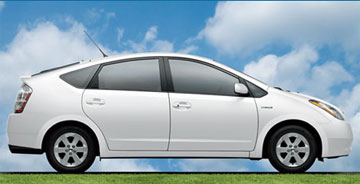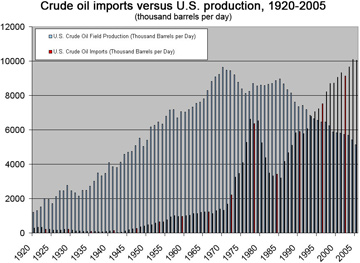Deal reached on U.S. fuel-economy standards
Deal reached on U.S. fuel-economy standards
mongabay.com
November 30, 2007
U.S. lawmakers reached an agreement to boost fuel-economy standards cars and light-duty trucks for the first time in more than 20 years.
The deal, struck late Friday night after days of negotiations, is expected to move through the House next week as part of an energy bill. The bill will raise the Corporate Average Fuel Economy (CAFE) to 35 miles a gallon by 2020, a level initially approved by the Senate earlier this year.
The legislation would also require auto makers to maintain a minimum fleet wide mileage average.
“I have supported raising CAFE standards in a sensible and effective way, and I believe the agreement reached today prescribes standards that are both aggressive and attainable,” said House Energy and Commerce Chairman John Dingell (D, Michigan). “After weeks of productive discussion and negotiation, we have achieved consensus on several provisions that provide critical environmental safeguards without jeopardizing American jobs.”
 
|
The current Corporate Average Fuel Economy (CAFE) standard is 27.5 mpg for cars — a level which hasn’t been raised since 1985 — and 22.2 mpg for pickups and SUVs. The proposed increase in fuel economy-standards is roughly 40 percent higher than current levels.
According to the Environmental Protection Agency (EPA), average fuel efficiency for U.S. automobiles is lower today (21.0 miles-per-gallon) than it was in 1987-1988 (22.1 miles-per-gallon), despite climbing oil prices and growing concerns over global warming.
In May, eleven states led by California sued the Bush administration for “illegally adopting ‘dangerously misguided’ gas mileage rules.” The suit alleged that the Highway Traffic Safety Administration’s new mileage standards violate federal law by ignoring both the environment environmental impact on oil use and the country’s growing dependence on imported oil.
This article is based on an article from The Wall Street Journal, a statement from the House of Representatives, and previous mongabay.com articles.
RELATED ARTICLES
U.S. can cut oil imports to zero by 2040, use to zero by 2050
The United States could dramatically cut oil usage over the next 20-30 years at low to no net cost, said Amory B. Lovins, cofounder and CEO of the Colorado-based Rocky Mountain Institute, speaking at Stanford University Wednesday night for a week-long evening series of lectures sponsored by Mineral Acquisition Partners, Inc.
Google will put $10M towards plug-in hybrid cars
Google.org, Google Inc.’s philanthropic arm, unveiled an initiative to convert hybrid cars to plug-in hybrid vehicles (PHEVs), a move that will cut carbon dioxide emissions, reduce oil use, and help stabilize the electrical grid. Google.org will put $10 million towards the effort, which will start by modifying six hybrid cars (4 Toyota Priuses and 2 Ford Escapes) with batteries that can draw and feed electricity to and from the grid. The company says that the cars are outfitted with data recording devices that track technical and environmental performance, use patterns and charging history and post the results to the web.
Plug-in hybrid electric vehicles will cut pollution, emissions, oil use
Plug-in hybrid electric vehicles (PHEVs) could reduce greenhouse gas emissions and improve air quality significantly by 2050, reports a new study by The Electric Power Research Institute (EPRI) and the Natural Resources Defense Council (NRDC).